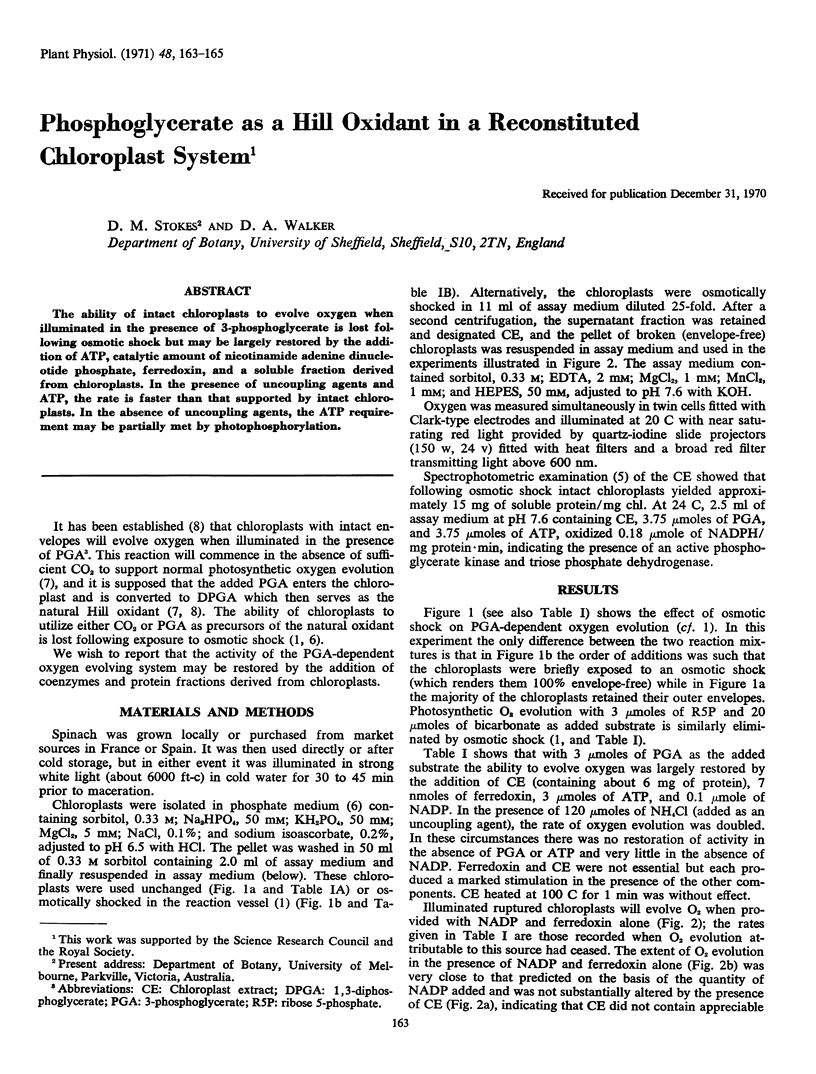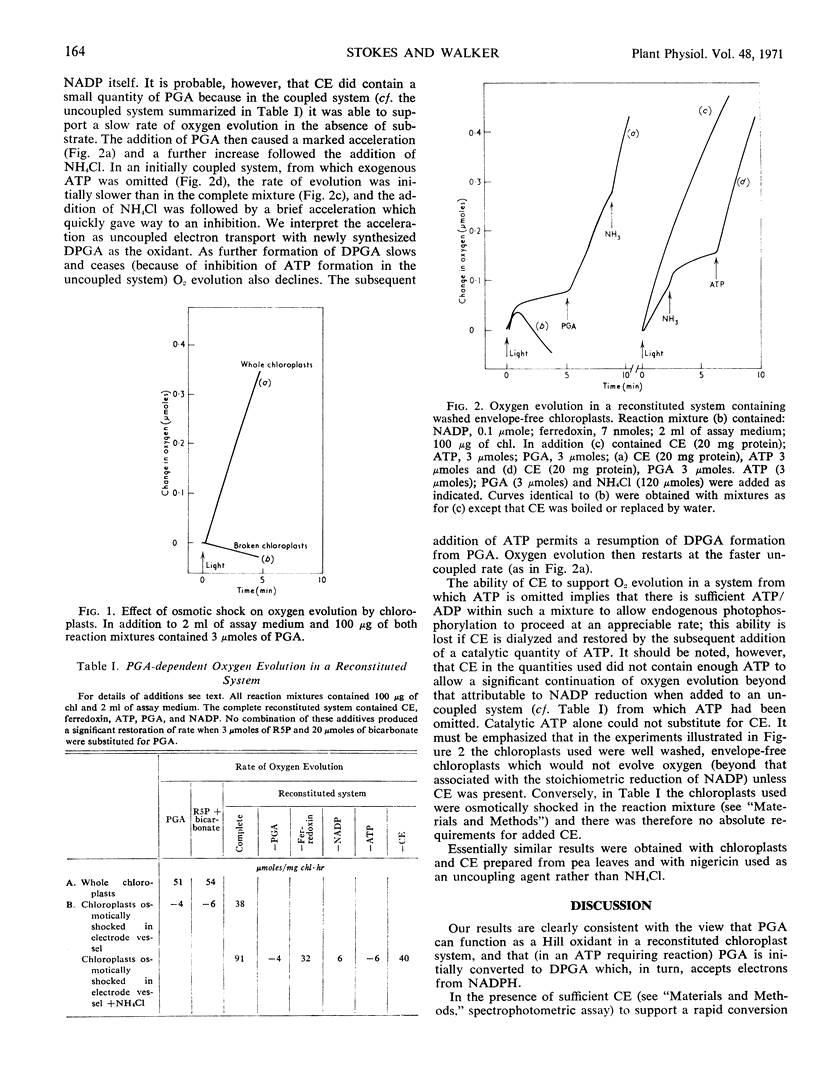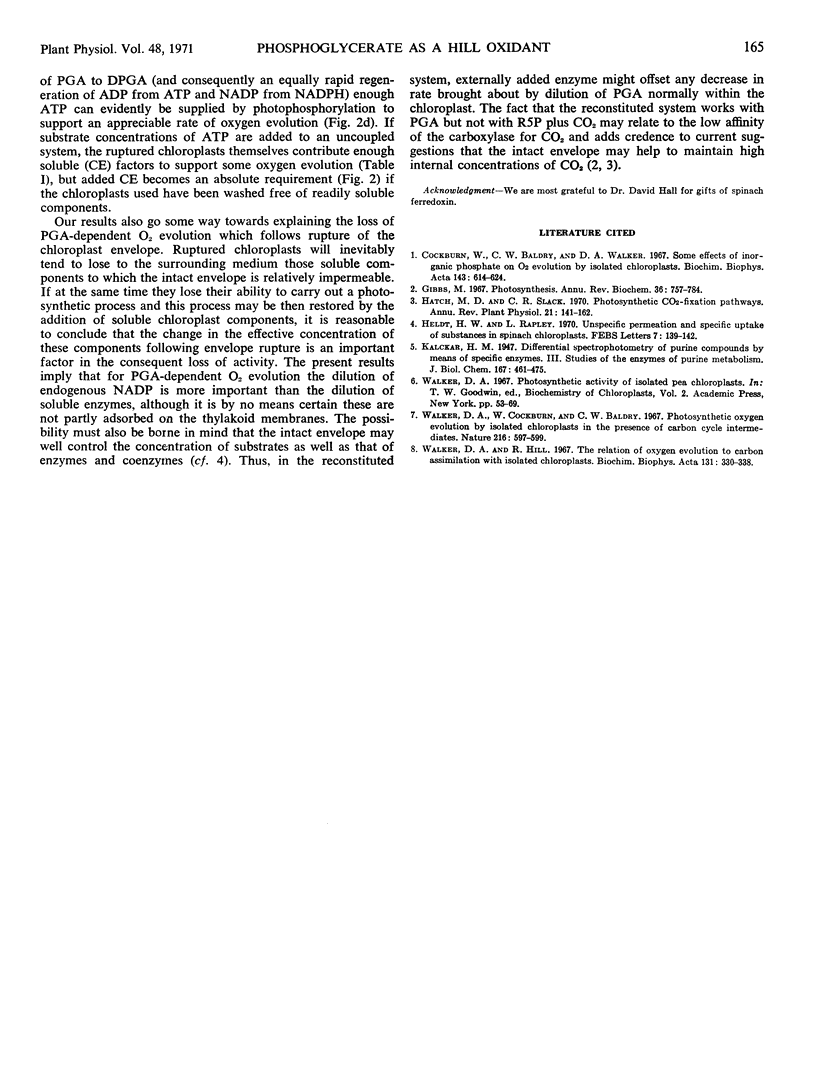Abstract
The ability of intact chloroplasts to evolve oxygen when illuminated in the presence of 3-phosphoglycerate is lost following osmotic shock but may be largely restored by the addition of ATP, catalytic amount of nicotinamide adenine dinucleotide phosphate, ferredoxin, and a soluble fraction derived from chloroplasts. In the presence of uncoupling agents and ATP, the rate is faster than that supported by intact chloroplasts. In the absence of uncoupling agents, the ATP requirement may be partially met by photophosphorylation.
Full text
PDF


Selected References
These references are in PubMed. This may not be the complete list of references from this article.
- Cockburn W., Baldry C. W., Walker D. A. Some effects of inorganic phosphate on O2 evolution by isolated chloroplasts. Biochim Biophys Acta. 1967;143(3):614–624. doi: 10.1016/0005-2728(67)90067-9. [DOI] [PubMed] [Google Scholar]
- Heldt H. W., Rapley L. Unspecific permeation and specific uptake of substances in spinach chloroplasts. FEBS Lett. 1970 Apr 2;7(2):139–142. doi: 10.1016/0014-5793(70)80140-5. [DOI] [PubMed] [Google Scholar]
- Walker D. A., Hill R. The relation of oxygen evolution to carbon assimilation with isolated chloroplasts. Biochim Biophys Acta. 1967 Mar 8;131(2):330–338. doi: 10.1016/0005-2728(67)90146-6. [DOI] [PubMed] [Google Scholar]


